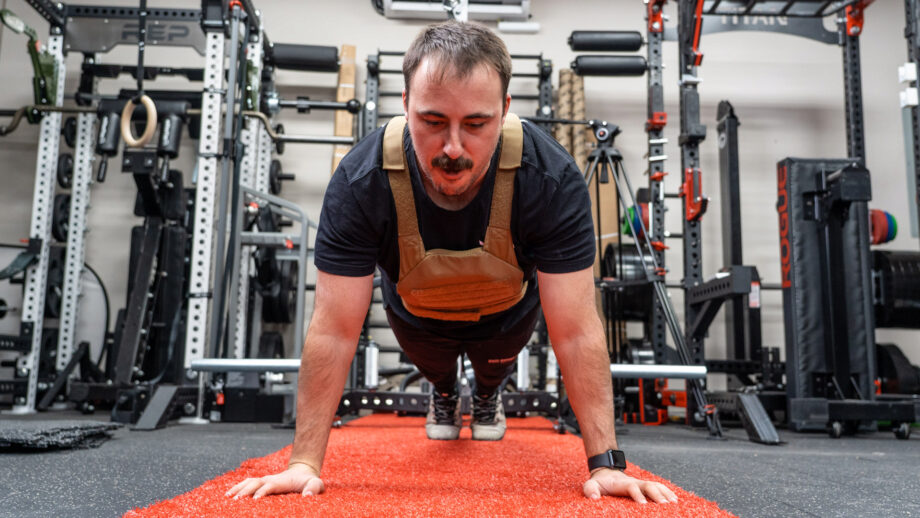We test and review fitness products based on an independent, multi-point methodology. If you use our links to purchase something, we may earn a commission. Read our disclosures.
If you were asked for the best exercise to work the chest, shoulders, and triceps, how would you respond? The bench press? Or maybe the dumbbell bench press? I wouldn’t argue with either of these two answers, but I’d put forward another that is, for me, at a minimum on par with both exercises. You guessed it, the push-up.
Not convinced? A 2019 study by the Sports Medicine International Open1 compared bench presses and push-ups for differences in kinematics and muscle activation and found that both can be used interchangeably, especially if you use a weighted vest for push-ups to mimic different intensities in bench presses.
RELATED: Best Chest Exercises
Today, I—a certified personal trainer (CPT)—will describe how to do a standard push-up, the muscles worked, and the 17 best push-up variations. I’ll also discuss how to program these variations so you can start using them immediately.
What is a Push-Up?
A push-up is a functional bodyweight exercise that works the majority of the muscles in your upper body (more on this below). They’re convenient and included in many strength training programs, CrossFit workouts, and even military training.
RELATED: CrossFit Workouts At Home
As for the benefits of push-ups, they can help increase strength and size and may help combat cardiovascular diseases, as shown in a 2019 study by the JAMA Network Open2. It found that higher baseline push-up capacity is associated with a lower incidence of cardiovascular disease events. Push-ups also require little to no equipment and can be done from anywhere. Lastly, there are myriad variations you can use to regress, progress, or add variety to your traditional push-ups. Which is, of course, the reason you’re here.
But first, allow me to describe how to do standard push-ups with proper form.
Standard Push-Up
How to do it:
- Start in the high plank position (also known as the push-up position). You’ll want your arms extended and palms on the floor, shoulder-width apart.
- Engage your core and glutes. Then, bend at your elbows to slowly move toward the floor.
- Keeping your elbows tucked in, lower yourself until your chest is as close to the floor as possible without collapsing.
- Hold before pushing your hands into the floor to return to your original position.
- Continue for the desired number of reps.
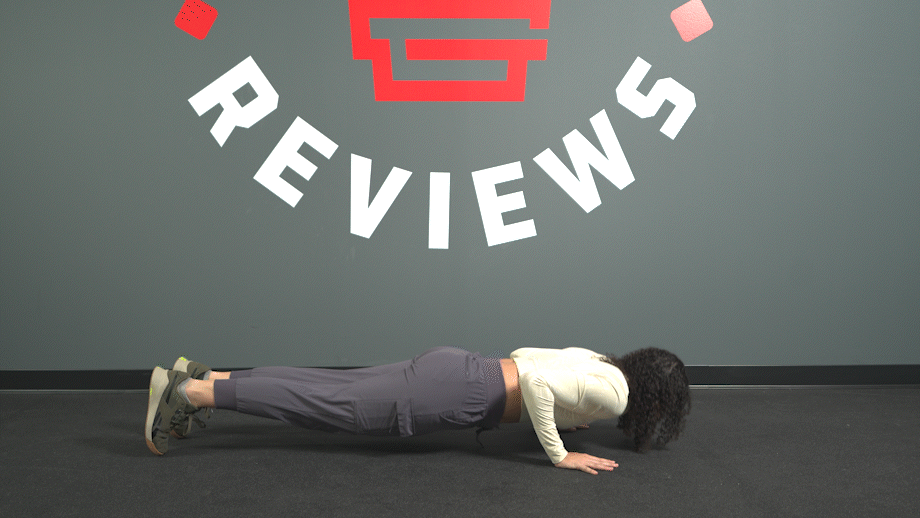
What Muscles Do Push-Ups Work?
Great question! The primary muscles that push-ups work are your pecs (pectoralis major and minor), deltoids (in particular, the anterior deltoid), and triceps. You’ll also hit the biceps, lats, glutes, traps, serratus anterior, and the core.
All in all, push-ups are a total upper-body exercise, which is likely why you have so many push-up variations in the first place! Let’s get to them.
17 Best Push-Up Variations
Now that you fully understand the movement mechanics of the push-up, it’s time to get creative. Here are the 17 best push-up variations and how to do them step-by-step:
Kneeling Push-Up
Why do it: Knee push-ups are a great way for beginners—or those finding regular push-ups difficult—to learn the push-up form. These are a great halfway point that gets you on the floor without doing the full movement.
How to do it:
- Get into a modified plank position. Your palms should be on the floor, shoulder-width apart, but instead of having your toes on the ground, start on your knees.
- Tucking your elbows in, lower yourself toward the ground.
- Once you can’t lower yourself further, pause before straightening your arms to push back up.
- Continue for reps.
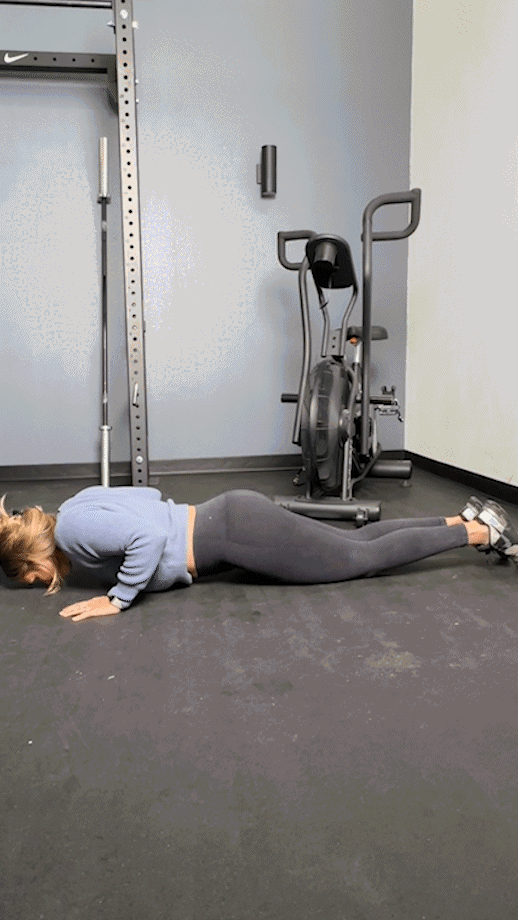
Close-Grip Push-Up
Why do it: Also known as diamond push-ups, this variation hits the same muscle groups as traditional push-ups but with a slight difference. A 2005 study by the Journal of Strength and Conditioning Research3 found that the narrower the hand position during the push-up, the greater the muscle activation in the pectoralis major and triceps brachii.
How to do it:
- Get into the push-up position with your hands narrower than shoulder-width apart, or with your thumbs and index fingers touching.
- Brace your glutes and core, then lower yourself toward the floor by bending your elbows.
- When your chest touches the floor, reverse the motion to get into the starting position.
- Repeat for repetitions.
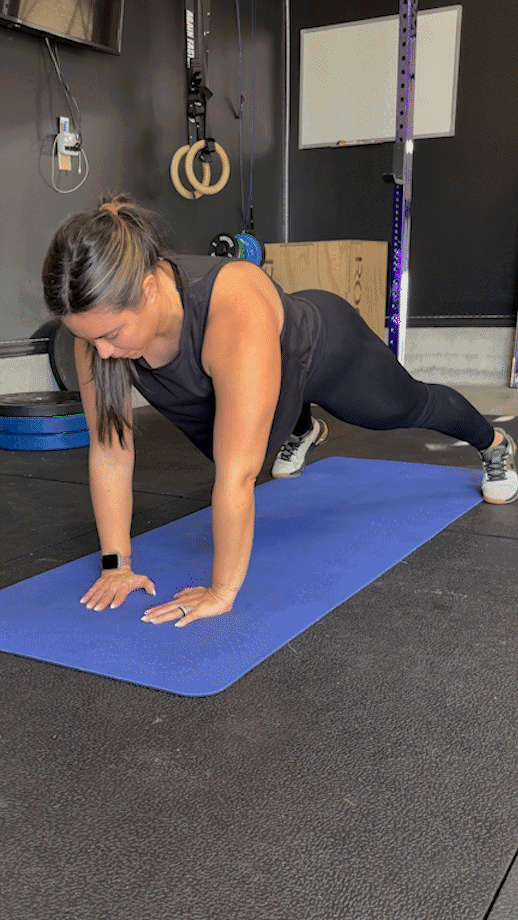
Wide-Grip Push-Up
Why do it: A 2016 study by the Journal of Physical Therapy Science4 found that although wide-grip push-ups hit the chest muscles and triceps to a lesser extent than regular and close-grip push-ups, they activate the serratus anterior to a greater extent. Regularly doing serratus anterior exercises can help to prevent scapular dyskinesis and rotator cuff injuries.
How to do it:
- Once you’re in the high plank position, adjust your hands so they’re wider than they would be with a regular push-up (the wider the hands, the more difficult the movement).
- Tuck your elbows in, then bend them to move toward the ground with control. Ensure your core is activated and your head is neutral.
- When you can’t lower yourself any further, pause before pushing back up to the original position.
- Keep going for reps.
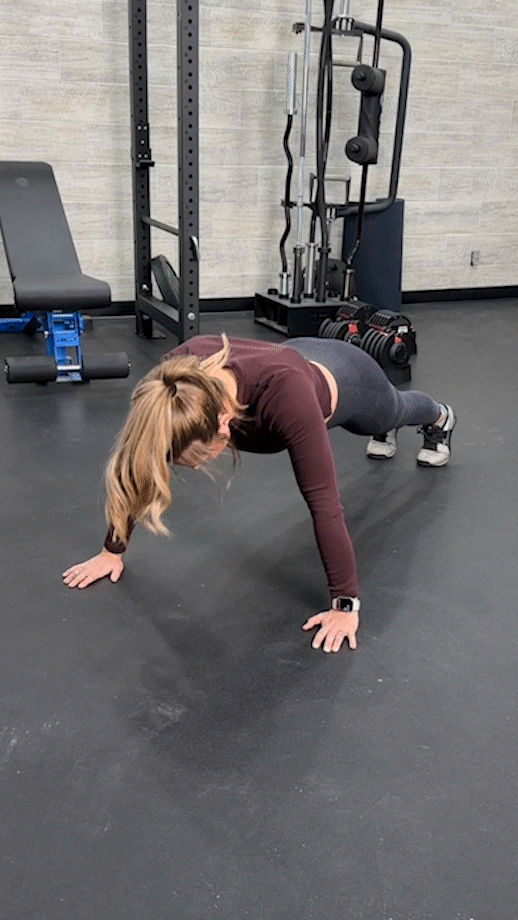
Incline Push-Up
Why do it: Beginners (or those finding standard push-ups difficult) can try incline push-ups instead. It’s a fantastic exercise for those who can’t get onto the floor and back up easily. It’s worth noting that the closer the equipment is to the ground, the harder the exercise will be.
How to do it:
- Grab a stable surface like a flat bench, plyometric box, or chair.
- Place your hands on the surface, shoulder-width apart.
- Walk your feet out until you’re in the push-up position. From here, activate your core and glutes.
- Lower your chest toward the surface by bending your elbows. Hold for a moment, then slowly reverse the motion until your arms are extended.
- Repeat the movement for reps.
RELATED: Best Weight Bench
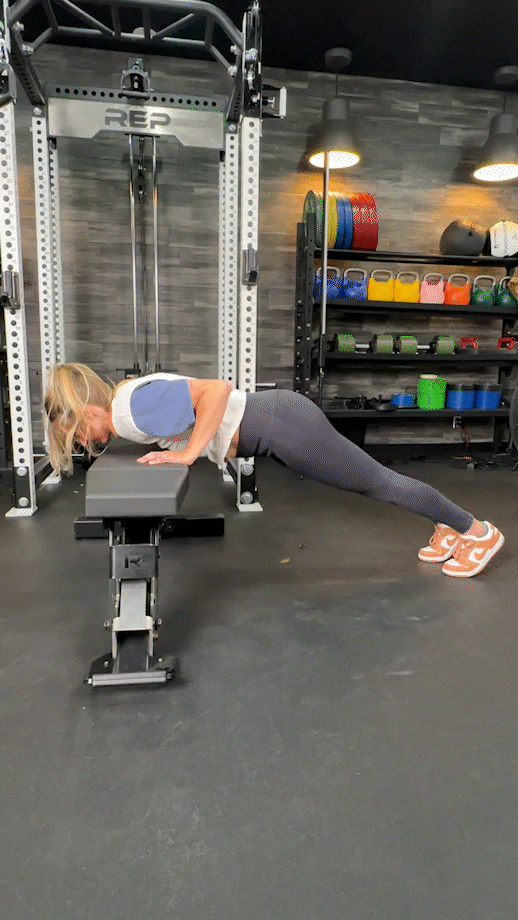
Decline Push-Up
Why do it: It’s opposite day. Starting with your feet on an elevated surface increases the range of motion with this bodyweight exercise, making it more challenging than regular push-ups. The higher your feet, the more difficult the movement becomes. If you’re going to perform decline push-ups, be sure to maintain proper form throughout.
How to do it:
- Place both feet on a flat bench, plyometric box, or any sturdy object.
- Walk your hands out until you’re in the high plank position. You’ll want your hands to be shoulder-width apart, ensuring a straight line between your shoulders and feet.
- Bend at your elbows until your chest is as close to the floor as possible. Pause before returning to the starting position.
- Continue for the desired number of reps.
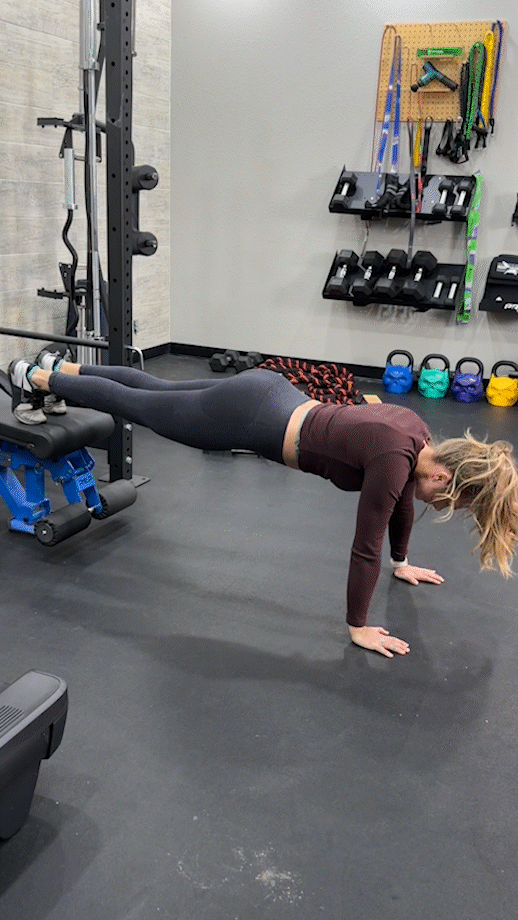
Wall Push-Up
Why do it: For some folks, regular push-ups can cause neck, back, palmar, or wrist pain, as found in certain studies5. By doing wall push-ups, you can build strength while potentially reducing pain. They’re an excellent push-up variation if you find it difficult to get onto the ground to do traditional push-ups.
How to do it:
- Stand facing a wall with your feet hip-width apart. You should be positioned roughly one arm’s length away from it.
- Keeping your feet where they are, place your hands on the wall. Your fingers should be facing up toward the ceiling.
- Brace your core before bending at your elbows to move closer to the wall.
- Hold, then push through your hands to return to your original position.
- Keep going for reps.
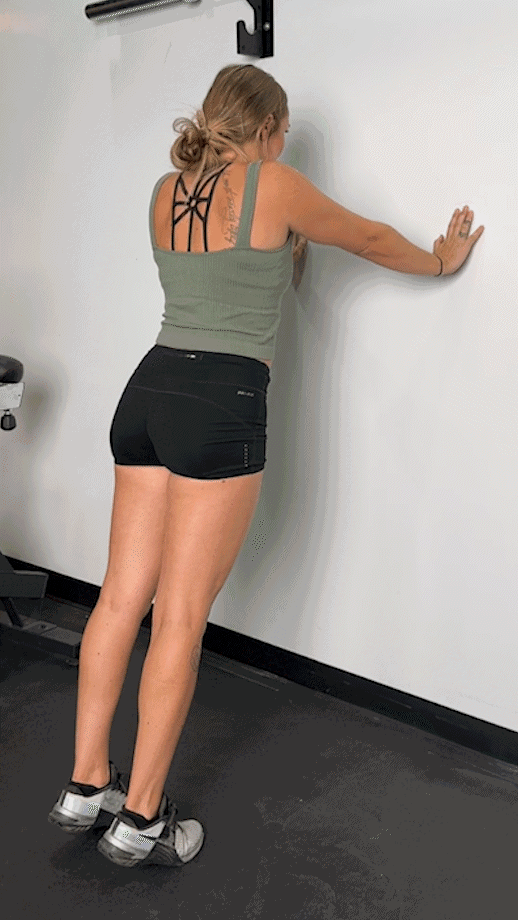
Reverse-Grip Push-Up
Why do it: Reverse-grip press-ups target your biceps and back muscles more than regular push-ups. Because of the hand position, they’re more challenging, too. Clients have mentioned that they put strain on their wrists occasionally when doing these, so it’s worth taking caution when doing this exercise.
How to do it:
- Start by getting into the high plank position. One hand at a time, rotate your hands so your fingers are pointing toward your feet.
- Activate your core, squeeze your glutes, and then slowly lower yourself down.
- When your chest is close to the ground, pause. Then, push yourself back up until your arms are straight.
- Repeat for reps.
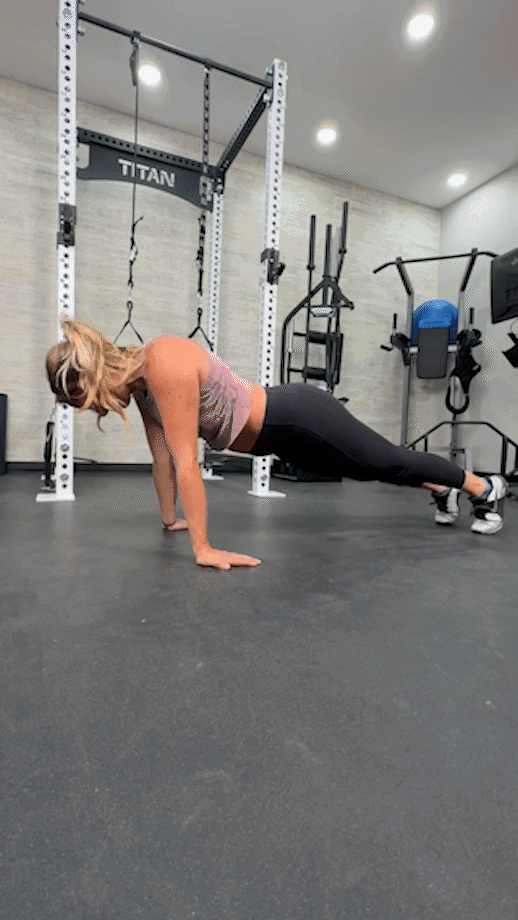
Staggered Push-Up
Why do it: With the advanced staggered push-up, you’ll develop serious core and upper body strength because of the balance needed to maintain this position. Let me tell you now, though—this exercise isn’t for the faint-hearted!
How to do it:
- Get into the push-up position. Adjust your hands so your left hand stays where it is and your right hand moves backward (roughly between five and 10 inches).
- Tuck your elbows in, engage your core, and bend at your elbows to lower yourself down.
- Hold before returning to the original position.
- Keep going for repetitions, then switch sides so your left hand is behind the right.
Expert tip: Although I’ve mentioned exercising one side at a time before switching to the opposite side, you could swap after every rep. Ensure that you take a few moments to reset.
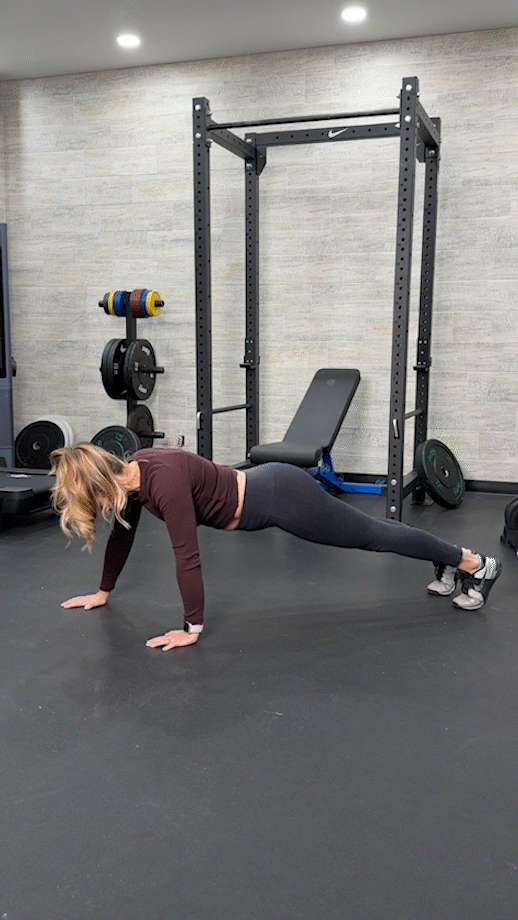
Spiderman Push-Up
Why do it: With the Spiderman push-up, your obliques and hip flexors will be set ablaze because you’re moving one side at a time. It’s also a unilateral exercise, which means you may fix muscular imbalances on either side of the body.
How to do it:
- Begin by getting into the high plank position with your hands shoulder-width apart.
- Squeeze your glutes, activate your core, and then bend at the elbows to move toward the ground.
- At the same time, lift your left foot off the floor and bring your left knee to your left elbow.
- Reverse the motion so you’re in the high plank position. On the next rep, bring your right knee to your right elbow instead.
- Continue for the desired number of reps.
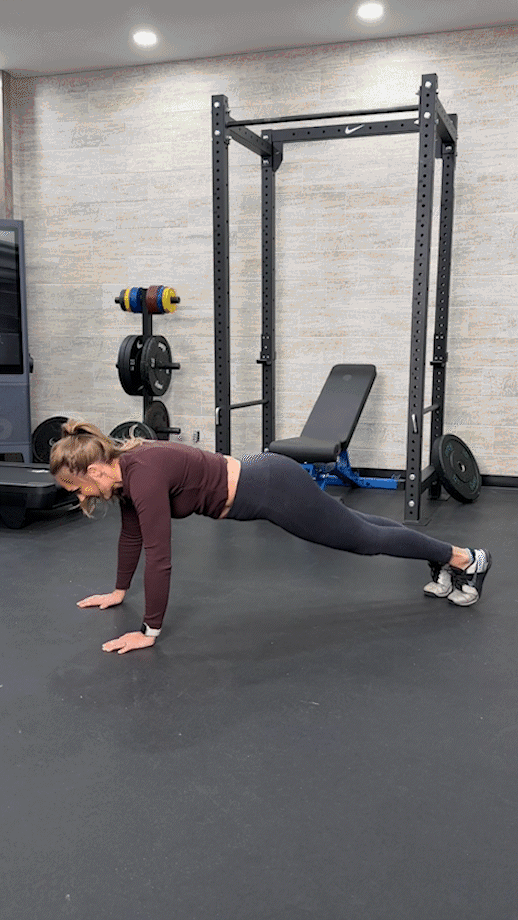
Superman Push-Up
Why do it: You’ve done Spiderman; it’s time for your next superhero workout. Superman push-ups are one of the most challenging push-up variations on this list, so if you’re finding the rest of the exercises too easy, give these a try. Because of its explosive nature, you’ll seriously hit your upper body and core during this exercise.
How to do it:
- Get into the push-up position. Now, brace your core and squeeze your glutes.
- Bend your elbows to move toward the floor as you would with a regular push-up.
- When your chest touches the floor, drive your palms into the ground to lift your entire body off the floor. Extend your arms as you do this to get into the Superman position.
- Land in the bottom position where you started, rather than the high plank position. This helps to minimize the strain on your wrists during the movement.
- Repeat for repetitions.
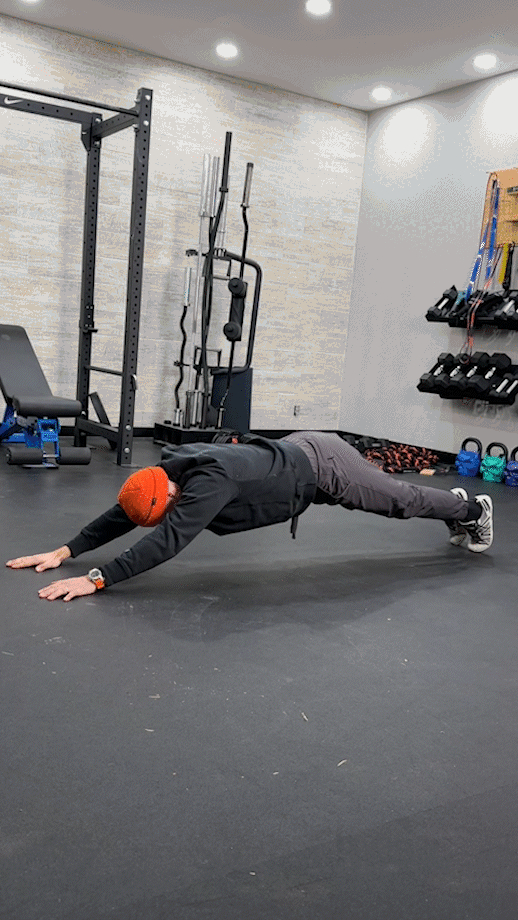
Clapping Push-Up
Why do it: It’s included in our list of plyometric exercises because clapping push-ups help to improve coordination, better your cardiovascular fitness, and give you more power and strength. You’ll also need to use your core strength during this exercise in order to leave the ground.
How to do it:
- Once you’re in the high plank position, engage your core and glutes. You’ll want a straight line from head to toe.
- Lower your body until your chest is as close as possible to the floor.
- From here, explode upwards. Your hands will need to leave the ground so you can perform a quick clap.
- Return your hands to the floor, catching and lowering yourself with control, then continue for reps.
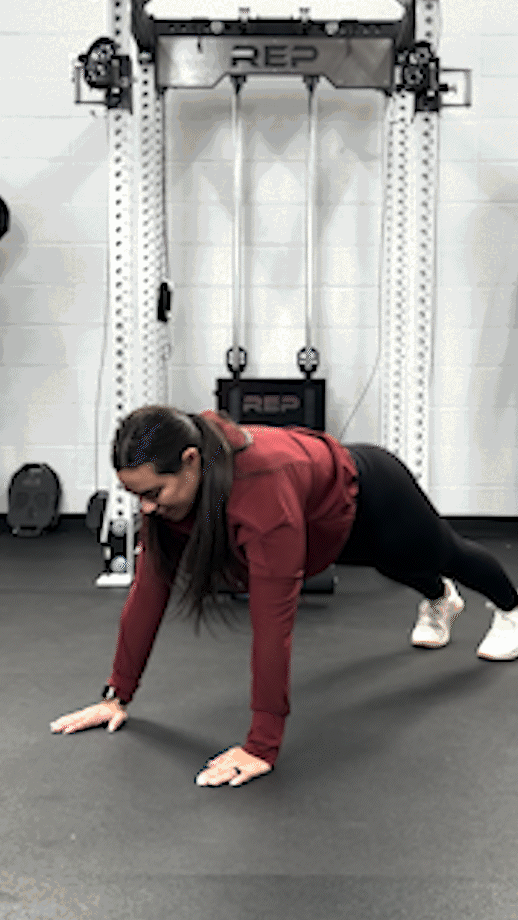
Pike Push-Up
Why do it: Pike push-ups are one of my favorites because of the emphasis placed on your upper chest and shoulders compared to standard push-ups. This is because you start in an inverted V-shape rather than a high plank position and need to rely heavily on your upper body strength and coordination to prevent falling.
How to do it:
- Start in the push-up position.
- Walk both feet toward your hands until your body forms an inverted V-shape, with your hips sticking up.
- Activate your core, squeeze your glutes, and then bend your elbows to move toward the floor. Keep going until your forehead is as close to the ground as possible.
- Pause before pushing back up to the starting position.
- Keep going for repetitions.
Expert tip: To make this exercise more difficult, start with your feet on an elevated surface, similar to decline push-ups. The only difference is that you’ll be in the pike position rather than the push-up position.
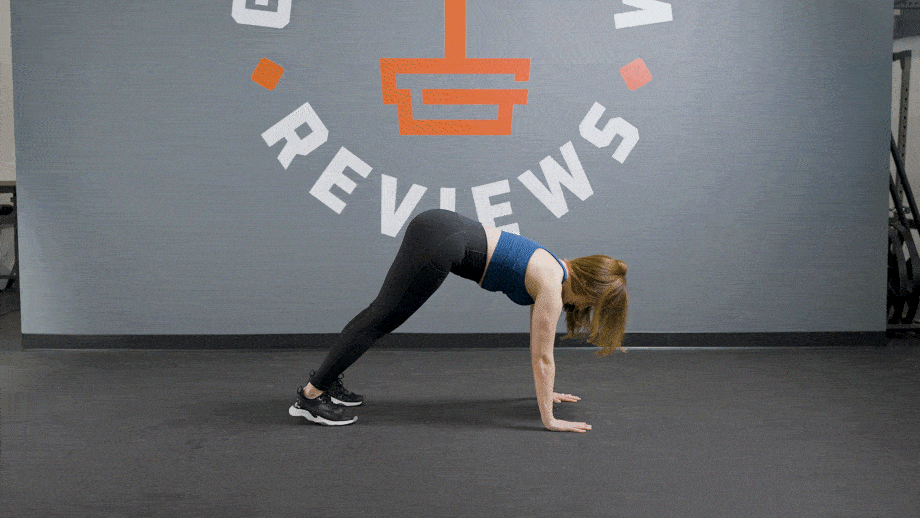
Plyo Push-Up
Why do it: Plyo push-ups are similar to clapping push-ups since your hands leave the ground but slightly easier because you don’t perform a clap while exploding up.
By doing plyo push-ups, you’ll reap the benefits of plyometric exercises, as shown in a 2015 study by the International Journal of Sports Physical Therapy6. These benefits include increased power and velocity, increased peak force and velocity of acceleration, and increased time for force development.
How to do it:
- Get into the high plank position.
- Brace your core, activate your glutes, and then bend at your elbows to lower yourself until your chest is almost touching the floor.
- Using force, push through your palms so your hands leave the ground. Land softly before resetting your body position.
- Continue for the desired number of reps.
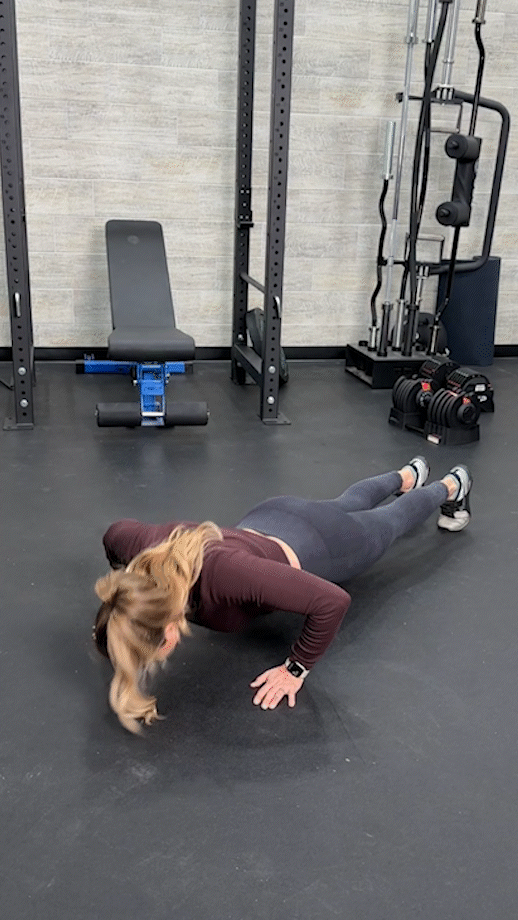
Medicine Ball Push-Up
Why do it: You’ll increase balance and strength in your abs and lower back because you start with your hands on a less stable surface (a medicine ball) rather than the floor. Trust me, even balancing on a medicine ball in a plank position is challenging enough, nevermind doing a full push-up!
How to do it:
- Kneel on the floor, and then place both hands on a medicine ball.
- Walk your legs back until you’re in the push-up position. You’ll want your feet to be slightly wider than you’d usually have them to help with stability.
- Contract your glutes and abs before lowering your chest toward the medicine ball.
- When you can’t lower yourself further, hold before returning to the original position.
- Repeat for the desired reps.
RELATED: Medicine Ball Workouts
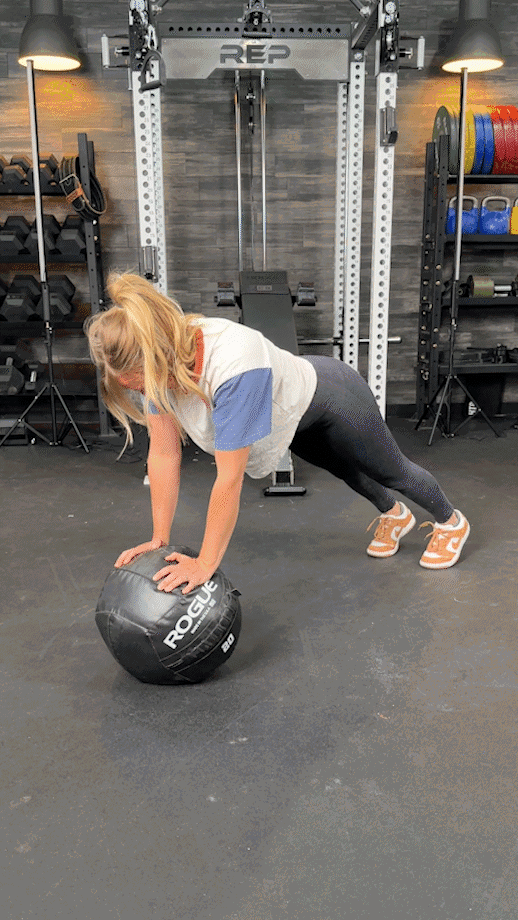
Weighted Push-Up
Why do it: You’ll impose a greater degree of stimulus on your chest, shoulders, and triceps with weighted push-ups compared to regular push-ups because instead of using your body weight only, you’re adding extra load. There’s no limit to this exercise either, so I highly recommend it for advanced lifters.
How to do it:
- Begin in the high plank position with your hands shoulder-width apart.
- Place (or have a spotter place) a weight plate on your upper back. Alternatively, you can use one of the best weighted vests.
- Brace your core, keep your head neutral, and then bend at your elbows to move toward the floor.
- Pause, then straighten your arms to return to the beginning position.
- Repeat for reps.
Expert tip: Weighted push-ups don’t have to be limited to having your hands shoulder-width apart. You can do other push-up variations on this list (such as close-grip and wide-grip) with extra load on your back.
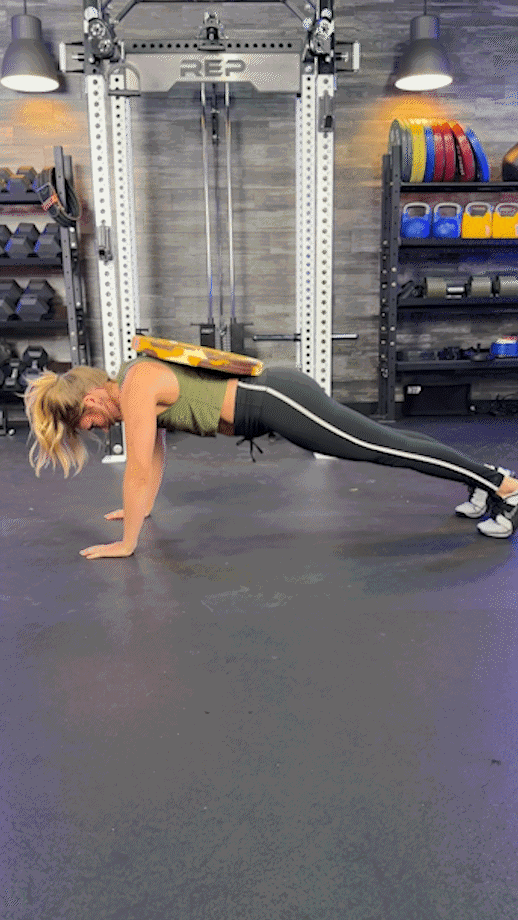
Band Push-Up
Why do it: When using a resistance band, you’re providing constant tension to the chest, shoulders, and tricep muscles throughout the full range of motion. As your arms straighten at the end of the movement, you should feel the effect of including a band. Other benefits of resistance bands include versatility and portability.
How to do it:
- Take hold of a resistance band with both hands and position it at the back of your shoulders.
- With your hands shoulder-width apart, get into the push-up position.
- Lower your body by bending your elbows until your chest is as close to the floor as you can get it.
- Hold before pushing through your palms to extend your arms.
- Keep going for reps.
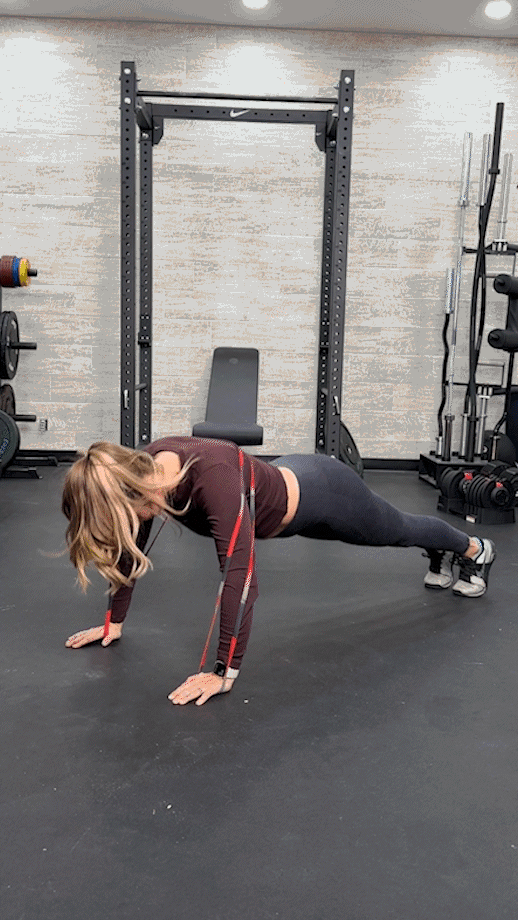
One-Arm Push-Up
Why do it: I mentioned above that Superman push-ups are one of the most advanced push-up variations. Well, Superman, you’ve met your kryptonite with single-arm push-ups. Because it’s a unilateral exercise, you’ll fix muscular imbalances on either side of the body while seriously improving your strength, coordination, and balance.
How to do it:
- Start by getting into the press-up position. Spread your feet so they’re wider than hip-width apart (this will help to keep you stable during the movement).
- Take your right hand off the ground and position it behind your back.
- Move your body toward the floor by bending your left elbow. Pause, and then return to the starting position.
- Continue for reps before switching hands so your left hand is behind your back instead.
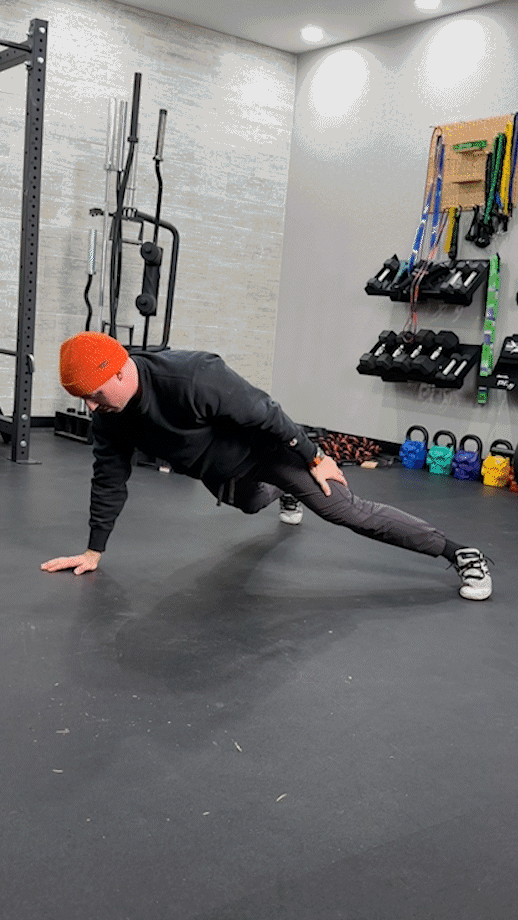
How to Program Push-Up Variations
I know your arms are aching to try the push-up variations above. Stick with me for a few moments because next, I’ll explain how to program these exercises for different fitness goals:
Adding Push-Up Variations To Warm-Ups
Although push-ups can be workouts by themselves (see below), you might want to continue doing your usual weightlifting program using dumbbells and barbells but use push-up variations in your warm-ups.
Let’s say you’re doing a heavy chest and tricep workout. Your warm-up could look like this:
| Exercise | Sets | Reps |
| Band Push-Up | 2 | 8 |
| Close-Grip Push-Up | 2 | 10 |
That’s it—you’re good to carry on as normal.
Best Push-Up Program for Strength
For my trainer-recommended strength push-up program, you’ll do short and intense sets on the more challenging push-up variations listed. This is because muscular strength is all about how much force you can put out only a few times:
| Exercise | Sets | Reps |
| One-Arm Push-Up | 2 | 5 |
| Weighted Push-Up | 3 | 6 |
| Reverse-Grip Push-Up | 3 | 6 |
| Wide-Grip Push-Up | 2 | As many reps as possible (AMRAP) |
Expert tip: If you can’t do one-arm push-ups, do staggered push-ups instead. For weighted push-ups, choose a weight that’s comfortable for the first three or four reps, but challenging at the end. After each set, rest between two and three minutes for your body to fully recover.
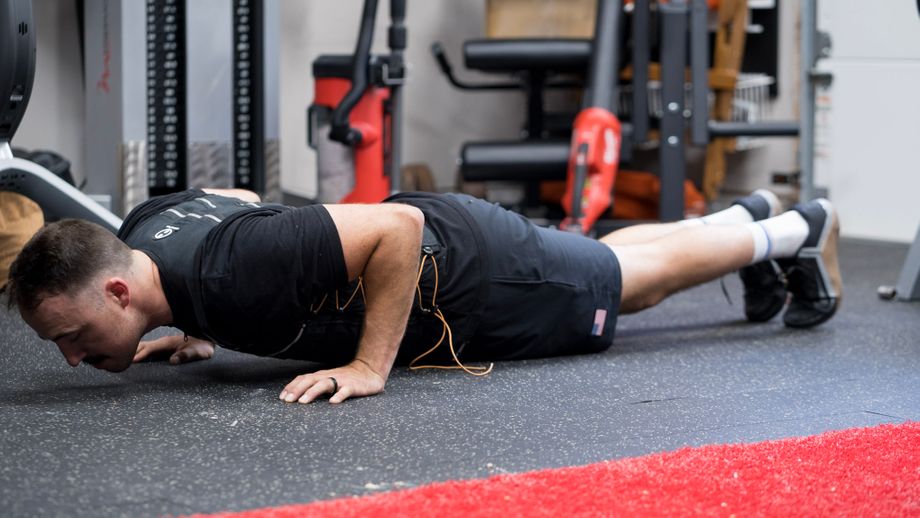
Best Push-Up Program For Hypertrophy
If you’re wanting to gain muscle with these push-up variations, I’ve got you covered. You’ll do more overall sets and higher reps than the strength program above, and your rest times will be shorter (between one and two minutes):
| Exercise | Sets | Reps |
| Spiderman Push-Up | 3 | 8 |
| Medicine Ball Push-Up | 4 | 8 |
| Pike Push-Up | 4 | 10 |
| Decline Push-Up | 3 | 12 |
Expert tip: Try not to change the order of this workout routine. It’s designed so that the more difficult exercises are at the start, and the easier ones are at the end.
Best Push-Up Program For Power
Here, you’ll be using plyometric push-up exercises because they use speed and force to improve muscle power:
| Exercise | Sets | Reps |
| Superman Push-Up | 3 | 6 |
| Clapping Push-Up | 4 | 8 |
| Plyo Push-Up | 4 | 10 |
Expert tip: I appreciate that not everyone can do Superman push-ups for six reps. If this is the case, do one or two extra sets on the other two exercises. Alternatively, perform one or two reps of Superman push-ups and slowly build it up.
Push-Up Variations: Final Thoughts
I love regular push-ups. However, there are several reasons why you may want more push-up variations. Maybe you find standard push-ups too easy or too difficult and need progressions or regressions. Alternatively, you may be seeking variety in your workout routine by way of targeting your muscles differently. Regardless of your reasoning, there are plenty of options to keep your muscles guessing.
To review, here are the 17 best push-up variations for you to try:
- Kneeling Push-Up
- Close-Grip Push-Up
- Wide-Grip Push-Up
- Incline Push-Up
- Decline Push-Up
- Wall Push-Up
- Reverse-Grip Push-Up
- Staggered Push-Up
- Spiderman Push-Up
- Superman Push-Up
- Clapping Push-Up
- Pike Push-Up
- Plyo Push-Up
- Medicine Ball Push-Up
- Weighted Push-Up
- Band Push-Up
- One-Arm Push-Up
Push-Up Variations: FAQs
What is the most effective push-up form?
For the standard push-up, the most effective form is the high plank position, with your arms shoulder-width apart and palms flat against the floor. From here, brace your core and squeeze your glutes. Now, tuck in your elbows and bend them to move toward the floor. When you get as close to the floor as possible, pause before reversing the motion to return to the starting position.
There are many different push-up variations, however. Each one is slightly different, and getting the form correct is important to make the most out of the exercise and avoid injury.
What is the best alternative for push-ups?
Push-ups work your chest, shoulders, and triceps. Therefore, alternative exercises could include the bench press, dumbbell shoulder press, dip, chest fly, or dumbbell chest press. The downside to these alternatives is that they may require equipment. With push-ups, all you need is a flat surface. For me, there’s no direct alternative.
What is the hardest type of push-up?
The hardest type of push-up depends on your starting position. Factors such as current fitness levels, age, weight, and fitness goals are important to consider. For someone new to strength training, kneeling or incline push-ups may be considered challenging.
If you’ve been doing regular push-ups for some time and find them relatively easy, you might want to add advanced push-up variations to your routine. Examples include, but are not limited to, Spiderman push-ups, clapping push-ups, weighted push-ups, and one-arm push-ups.
How many push-ups per day?
The number of push-ups per day depends on the type of push-ups you’ll do, current fitness levels, and other factors such as age and weight. There’s no right or wrong answer to this question. You don’t want to get injured, however, so if you’re going to do push-ups every day, stop when you’re no longer able to maintain proper form, regardless of the amount.
References
- Tillaar RVD. Comparison of Kinematics and Muscle Activation between Push-up and Bench Press. Sports Med Int Open. 2019 Sep 5;3(3):E74-E81. doi: 10.1055/a-1001-2526. PMID: 31508485; PMCID: PMC6728153.
- Yang J, Christophi CA, Farioli A, Baur DM, Moffatt S, Zollinger TW, Kales SN. Association Between Push-up Exercise Capacity and Future Cardiovascular Events Among Active Adult Men. JAMA Netw Open. 2019 Feb 1;2(2):e188341. doi: 10.1001/jamanetworkopen.2018.8341. PMID: 30768197; PMCID: PMC6484614.
- Cogley RM, Archambault TA, Fibeger JF, Koverman MM, Youdas JW, Hollman JH. Comparison of muscle activation using various hand positions during the push-up exercise. J Strength Cond Res. 2005 Aug;19(3):628-33. doi: 10.1519/15094.1. PMID: 16095413.
- Kim YS, Kim DY, Ha MS. Effect of the push-up exercise at different palmar width on muscle activities. J Phys Ther Sci. 2016 Jan;28(2):446-9. doi: 10.1589/jpts.28.446. Epub 2016 Feb 29. PMID: 27064571; PMCID: PMC4792988.
- Chuckpaiwong B, Harnroongroj T. Palmar pressure distribution during push-up exercise. Singapore Med J. 2009 Jul;50(7):702-4. PMID: 19644626.
- Davies G, Riemann BL, Manske R. CURRENT CONCEPTS OF PLYOMETRIC EXERCISE. Int J Sports Phys Ther. 2015 Nov;10(6):760-86. PMID: 26618058; PMCID: PMC4637913.
Further reading

After using the REP Fitness Monolift Attachment for over a month for squatting, benching, and other movements in my garage gym, I do think they’re a decent option. I think they could be improved if they are made lighter and the top arm length is reduced for better rack clearance, but the overall design and pricepoint is attractive. We recommend them if you understand the downsides and prefer the look to Rogue. Otherwise, we suggest one of the alternative options. Read more

If you were asked for the best exercise to work the chest, shoulders, and triceps, how would you respond? The bench press? Or maybe the dumbbell bench press? I wouldn’t argue with either of these two answers, but I’d put forward another that is, for me, at a minimum on par with both exercises. You guessed it, the push-up.Not convinced? A 2019 study by the Sports Medicine International Open1 compared bench presses and push-ups for differences in kinematics and muscle activation and found that both can be used interchangeably, » Read more about: 17 Push-Up Variations To Build Muscle In Your Chest, Shoulders, And Triceps » Read more

In our comparison of Factor vs HelloFresh, we’ll look at how this prepared meal delivery competes with one of the most popular meal kit services available. Read more

Your workouts are better when you fuel better. Here's a look at the best pre-workout food from a certified nutrition coach. Read more

